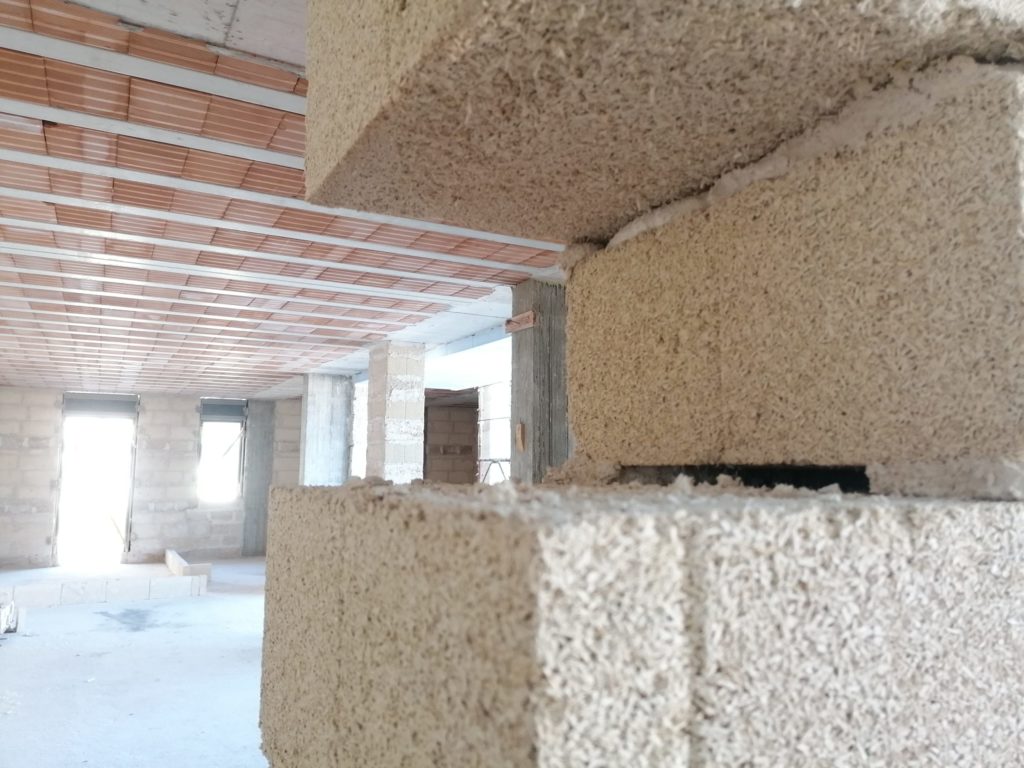The way you press hemp hurd into blocks can make a big difference in how well they insulate and hold up under stress.
That’s the key takeaway from a new peer-reviewed study published in the Journal of Natural Fibers. Researchers in Poland and Latvia found that compacting hemp-magnesium composites in line with the direction of heat flow improves insulation by up to 25%. When pressed in the opposite direction, the blocks were mechanically stronger. That suggests simply changing the direction of compaction could help manufacturers tailor products for better insulation or greater strength—without changing the materials.
The research was led by Przemysław Brzyski and Jakub Wankiewicz of Lublin University of Technology, Poland, together with Līga Puzule, Māris Šinka, and Diāna Bajāre of Riga Technical University, Latvia. The Journal of Natural Fibers is published by Taylor & Francis, a UK academic publisher based in Oxford.
What they tested
The team made blocks using hemp hurd and a binder made from magnesium oxide and magnesium chloride. They tested different mix ratios and pressed the samples in two directions to see how it affected thermal conductivity, compressive strength, water absorption, and capillarity.
In traditional hemp-lime construction, the most commonly used binder mixed with hemp hurd is hydrated lime, prized for its breathability. However, to accelerate curing, improve mechanical strength, or adapt to different climates, other substances are often added—most notably Portland cement, gypsum, fly ash, or pozzolans.
These additives can enhance early strength or modify workability but often compromise the environmental benefits that make hempcrete attractive in the first place. The new study distinguishes itself by using only a magnesium-based binder, aiming to deliver strength and performance without relying on these conventional additives.
Findings about strength
The researchers also found that the strongest blocks had compressive strength up to 1.73 MPa—similar to lightweight concrete. Thermal conductivity reached as low as 0.07 W/m·K in lighter mixes.
The research from the University of Žilina adds to this conversation by demonstrating that blocks made from hemp hurd and a magnesium-based binder can achieve compressive strengths over 3 MPa, meeting or exceeding the performance of some lightweight concrete materials.
While not yet suitable for high-load structural elements, the results suggest that hemp-magnesium composites could serve as self-supporting walls or structural masonry in specific applications, especially where thermal performance and sustainability are also valued. As binder chemistry evolves and testing protocols mature, these findings point to hemp’s potential beyond insulation—into the realm of structural design.
Most conventional hemp construction is based on hemp-lime or hempcrete used as infill within timber or steel structural frames. This approach prioritizes insulation, breathability, and carbon performance over compressive strength. However, recent years have seen growing interest in developing load-bearing hemp-based blocks that can simplify construction and broaden use cases—particularly in modular, prefabricated, or low-rise applications.
Environmental profile
A life cycle assessment (LCA) in the new report showed that most of the environmental impact came from the magnesium binder, especially magnesium chloride.
Beyond carbon footprint alone, the study’s environmental assessment highlights important considerations for material sourcing and circularity. While the magnesium chloride component carries the highest environmental burden, its impact is largely tied to how it is produced. If sourced from industrial by-products or desalination waste streams, as some manufacturers have explored, the binder’s footprint drops dramatically—positioning the composite as a low-impact, renewable alternative that could be competitive with conventional insulation like mineral wool.
This flexibility in input sourcing gives hemp-magnesium materials a potential advantage in future green building certification schemes, where life cycle emissions, resource efficiency, and supply chain transparency are under increasing scrutiny. By decoupling binder performance from virgin material extraction, the study hints at a path toward truly circular bio-based construction systems.

